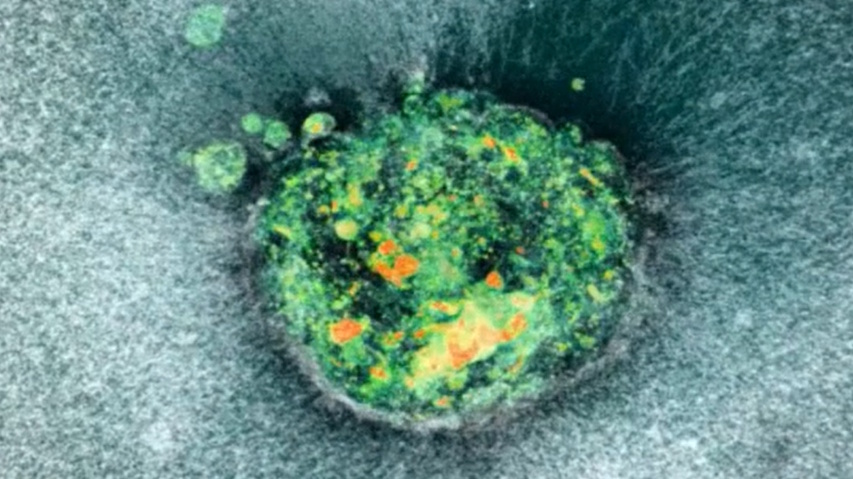Science
Researchers Unveil First Real-Time Visualization of Embryo Implantation

A groundbreaking study led by the Institute for Bioengineering of Catalonia (IBEC) has achieved the first real-time visualization of human embryo implantation, a process critical to understanding human reproduction. The research, published in Science Advances, aims to shed light on the dynamics of implantation, which is a significant factor contributing to miscarriages.
Human reproduction is known to be inefficient, with fewer than one-third of conceptions resulting in live births. The failure of an embryo to implant in the uterus is one of the primary causes of miscarriage, making this study particularly relevant for improving fertility treatments and assisted reproductive technologies.
Innovative Research Platform
To observe the implantation process, the IBEC team developed an ex vivo platform that simulates the conditions of the uterine environment. Unlike previous studies that focused primarily on biochemical and genetic factors, this new platform allows researchers to analyze the mechanical forces an embryo exerts as it embeds itself into the uterine wall.
The platform features a collagen gel that mimics the extracellular matrix found in vivo and incorporates globulin-rich proteins essential for embryo development. The research utilized two configurations: a two-dimensional platform where blastocysts settle on a flat gel, and a three-dimensional version where blastocysts are placed directly within collagen drops.
Using advanced imaging techniques, the researchers recorded time-lapse videos of the blastocyst implantation. They employed fluorescence imaging and traction force microscopy, allowing them to visualize the deformation of matrix fibers and measure the forces exerted by the embryos. This innovative approach revealed the specific regions where the embryo applied force during the implantation process.
Key Findings and Implications
In the two-dimensional platform, 72% of human blastocysts attached to and integrated into the collagen matrix, reaching depths of up to 200 μm. These embryos maintained a spherical shape and increased in size over time. The three-dimensional platform demonstrated an even higher success rate, with 80% of the embryos surviving and successfully invading the matrix.
The researchers also monitored the traction forces exerted by the embryos on the collagen matrix, noting that the displacement of fibers was not uniform and varied over time and space. This variable behavior could indicate that embryos continuously sense their environment during the implantation process.
Samuel Ojosnegros, the study leader, emphasized the invasiveness of the implantation process, stating, “We have observed that human embryos burrow into the uterus, exerting considerable force during the process. These forces are necessary because the embryos must be able to invade the uterine tissue, becoming completely integrated with it.” He noted that while abdominal pain and slight bleeding during implantation are common experiences for many women, the process itself had not been directly observed until now.
In contrast, the study also examined the implantation of mouse blastocysts, which exhibited limited outgrowth, primarily remaining on the surface of the matrix. The human embryos displayed a more aggressive invasion pattern, highlighting species-specific differences in implantation mechanics.
The research team is now working on developing a theoretical framework to further understand the physical processes involved in implantation. According to Amélie Godeau, a co-first author on the study, “Our observations at earlier stages show that attachment is a limiting factor at the onset of human embryo implantation. Our next step is to identify the key elements that enable a successful initial connection between the embryo and the matrix.”
This significant research offers valuable insights into the mechanics of embryo implantation, with the potential to enhance fertility treatments and improve outcomes for individuals undergoing assisted reproductive technologies.
-

 World3 days ago
World3 days agoCoronation Street’s Shocking Murder Twist Reveals Family Secrets
-

 Entertainment4 months ago
Entertainment4 months agoKate Garraway Sells £2 Million Home Amid Financial Struggles
-

 Entertainment3 months ago
Entertainment3 months agoAnn Ming Reflects on ITV’s ‘I Fought the Law’ Drama
-

 Health3 months ago
Health3 months agoKatie Price Faces New Health Concerns After Cancer Symptoms Resurface
-

 Entertainment3 weeks ago
Entertainment3 weeks agoCoronation Street Fans React as Todd Faces Heartbreaking Choice
-

 World4 weeks ago
World4 weeks agoBailey Announces Heartbreaking Split from Rebecca After Reunion
-

 World6 days ago
World6 days agoKevin Sinfield Exceeds Fundraising Goal Ahead of Final Marathons
-

 Entertainment6 days ago
Entertainment6 days agoTwo Stars Evicted from I’m A Celebrity Just Days Before Finale
-

 Entertainment3 months ago
Entertainment3 months agoCoronation Street’s Carl Webster Faces Trouble with New Affairs
-

 Entertainment3 months ago
Entertainment3 months agoWhere is Tinder Swindler Simon Leviev? Latest Updates Revealed
-

 Entertainment4 months ago
Entertainment4 months agoMarkiplier Addresses AI Controversy During Livestream Response
-

 Science2 months ago
Science2 months agoBrian Cox Addresses Claims of Alien Probe in 3I/ATLAS Discovery





















